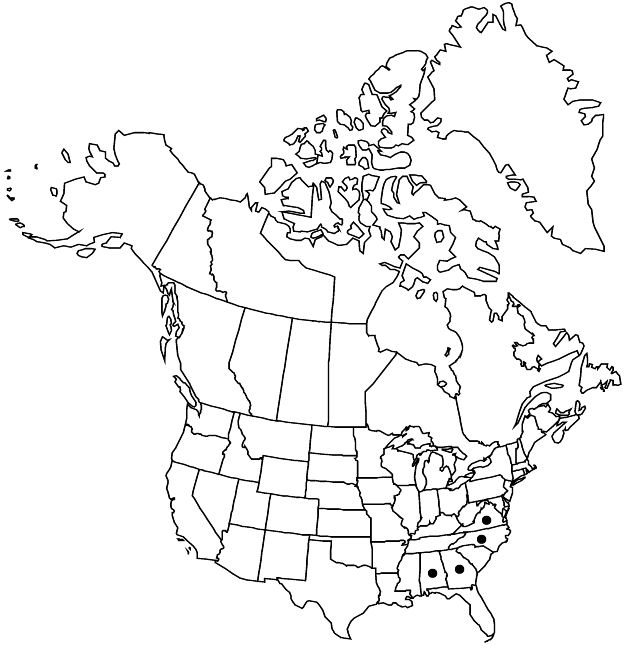Crataegus extraria
Biltmore Bot. Stud. 1: 73. 1902.
Shrubs, 25 dm. Stems: twigs ± flexuous, new growth not recorded, 1-year old reddish brown, older dark purple-brown; thorns on twigs numerous, straight, 2-years old blackish, fine, 2–3 cm. Leaves: petiole length 33–40% blade, sparsely pubescent, sessile-glandular; blade rhombic-ovate, 3–4 cm, widest towards base, thin, base cuneate, lobes 2 or 3 per side, obscure to short, sinuses ± shallow, lobe apex acute, margins serrulate, teeth gland-tipped, veins 4 or 5 per side, apex acuminate, abaxial surface sparsely pubescent, adaxial glabrous. Inflorescences 3–5-flowered; branches pilose; bracteoles not seen. Flowers 16–20 mm diam.; hypanthium pilose; sepals narrowly triangular, margins glandular-serrate; stamens 12–15(or 20), anthers dark purple; styles 2 or 3(or 4). Pomes red (yellow-orange immature), suborbicular, 9–12 mm diam., glabrous; sepals on collar, spreading; pyrenes 4.
Phenology: Flowering Apr–May; fruiting Sep–Oct.
Habitat: Brush
Elevation: 50–500 m
Distribution

Ala., Ga., N.C., Va.
Discussion
Crataegus extraria has always been very rare, occurring in scattered localities in North Carolina and Virginia.
As treated here, there is considerable extension to forms beyond the typical that may include hybrids.
Selected References
None.